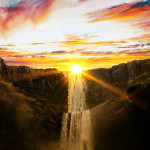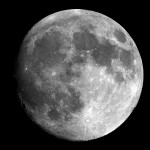STANFORD UNIVERSITY
Stanford University has one of the largest campuses in the United States and is one of the most prestigious universities in the world. It was founded in 1885 and six years later opened as a coeducational institution. less than an hour's drive south of San Francisco near Palo Alto, in the heart of California's Silicon Valley, the university is known for its entrepreneurial spirit. Its entrepreneurship has its roots in the post-World War II era, when Provost encouraged innovation that led to the self-sustaining industry that became Silicon Valley.
By 1970, the university had a linear accelerator and hosted part of the early network that became the technical basis of the Internet. The main campus covers an area of 8,180 hectares and is home to almost all students studying at the university. There are 700 large university buildings in three colleges and four professional schools, with 40 departments and 18 independent laboratories, centers and institutes, many famous alumni associated with the university from the worlds of business, politics, media, sports and technology.
The 31st President of the United States, Herbert Hoover, was a member of Stanford's first class and received a degree in geology in 1895. Today, Stanford is also one of the top producers of members of the United States Congress 30 living billionaires , 17 astronauts, 18 Turing Award winners, and two Fields Medalists The founders of Google met during their doctoral studies at Stanford, although neither finished their dissertation. 2.7 trillion USD, which would make it the tenth largest economy in the world. These companies include Nike, Netflix, Hewlett-Packard, Sun Microsystems, Instagram, Snapchat, PayPal and Yahoo. The first American woman in space, Sally Ride, earned a bachelor's degree in physics from Stanford in 1973.
Only 10 years later, he took off into space. In the five years to 2012, the university accepted the challenge of obtaining more than 4 billion USD. Fundraising exceeded that goal and ended the campaign with $6.2 billion, which will be used to name new faculty positions, endow graduate scholarships and bursaries, and construct 38 new or existing campus buildings. Some of the funds have already been used for major projects, including the world's largest cell research center, a new business school campus, a law school expansion, a new engineering facility, a campus concert hall and an art museum.
MASSACHUSETTS INSTITUTE OF TECHNOLOGY
The Massachusetts Institute of Technology (MIT) is an independent, coeducational, private research university located in Cambridge, Massachusetts. Founded in 1861, MIT's mission is to "advance knowledge and educate students in the sciences, technologies, and other fields of study that best serve the nation and the world today." Its motto is Mens et Manus, meaning "mind and hand". The university has 85 Nobel laureates, 58 National Medal of Science winners, 29 National Medal of Technology and Innovation winners, and 45 MacArthur Fellows. One of its most influential alumni is former UN Secretary General Kofi Annan. Scientific discoveries and technological developments approved by MIT include e.g. the first chemical synthesis of penicillin, the development of radar, the discovery of quarks, and the invention of magnetic nuclear memory, which enabled the development of digital computers. MIT is currently divided into five different schools: Architecture and Design, Engineering, Humanities, Arts and Social Sciences, Management, and Science. It is home to approximately 1,000 faculty members and more than 11,000 undergraduate and graduate students. Current research interests at MIT include digital learning, sustainable energy, big data, human health and more. In addition to emphasizing innovation and entrepreneurship, MIT also has a diverse and vibrant campus environment with a wide variety of student groups. The campus is located in 168 acres in Cambridge, with 18 student residences, 26 acres of playgrounds, 20 gardens and green spaces, and more than 100 pieces of public art. MIT estimates that all of its living alumni have founded more than 30,000 active companies, created 4.6 million jobs and generated approximately $1.9 trillion in annual revenue. All in all, this "MIT country" equals the world's 10th largest economy, they say.
HARVARD UNIVERSITY
Since 1636, Harvard University is the oldest university in the United States and is considered one of the most prestigious universities in the world. It is named after its first benefactor, John Harvard, who left his library and half of his fortune to the institution when he died in 1638. The private Ivy League institution is associated with more than 45 Nobel laureates and more than 30 leaders. state and 48 Pulitzer Prize winners. It has more than 323,000 living alumni, with more than 271,000 in the United States and nearly 52,000 in 201 other countries. Thirteen American presidents received honorary doctorates from the institute; The last of them was awarded to John F. Kennedy in 1956.
Faculty members who have won a Nobel Prize in recent years include chemist Martin Karplus and economist Alvin Roth, while notable alumni include former US Vice President Al Gore, who won the 2007 Peace Prize, and poet Seamus Heaney, who was the 1981-1997 Harvard professor. Located in Cambridge, Massachusetts, Harvard's 5,000-acre campus is home to 12 graduate schools, as well as the Radcliffe Adv Institute and two theater schools. five museums.
It is also home to the world's largest academic library, with 20.4 million volumes, 180,000 serial titles, approximately 400 million manuscripts, 10 million photographs, 124 million archived web pages and 5.4 terabytes of digital archives and manuscripts. there are more than 400 student organizations on campus, and Harvard Medical School is affiliated with 10 hospitals. The university will have one of the largest colleges in the world; it earned $1.5 billion in the fiscal year that ended in June 2013—more than a third of Harvard's total revenue that year. Harvard's official color is purple after a vote in 1910 when two rowers offered purple scarves to their teammates so spectators could distinguish the university. crew during the regatta (1858).
PRINCETON UNIVERSITY
Princeton is one of the oldest universities in the United States and is considered one of the most prestigious universities in the world. It was founded in 1746 as the College of New Jersey and officially named Princeton University in 1896 in his honor. from its location. It opened its famous high school in 1900. The Ivy League is recognized for its commitment to education. the college provides housing for all its students during all four academic years, and 98 percent of undergraduate students live on campus. Its student body is relatively small, less than 10,000 in total, and international students make up 12 percent of undergraduate students.
Princeton is also one of the world's leading research universities, with ties to more than 40 Nobel Prize winners, 17 National Medal of Science winners and five National Humanities Medal winners. Among the professors who received the Nobel Prize in recent years are chemists. Tomas Lindahl and Osamu Shimomura, economists Paul Krugman and Angus Deaton, and physicists Arthur McDonald and David Gross. Famous Nobel Prize-winning alumni include physicists Richard Feynman and Robert Hofstadter and chemists Richard Smalley and Edwin McMillan. Madison and Woodrow Wilson, who was also president of the university before entering the White House.
Other notable graduates include Michelle Obama, actors Jimmy Stewart and Brooke Shields, Amazon founder Jeff Bezos and Apollo astronaut Pete Conrad. Consistently ranked among the top 10 universities in the world, Princeton is known for its parkland beauty. the campus and attractions were designed by some of America's most famous architects. For example, its Lewis Library was designed by Frank Gehry and houses many of the university's research collections. Its McCarter Theater Center won a Tony Award for best regional theater in the country.
Princeton's campus covers 500 acres and contains about 180 buildings, including 10 libraries, with a collection of about 14 million. It is popular with visitors as approximately 800,000 people visit its open campus each year, generating approximately $2 billion in revenue. The Princeton area, home to about 30,000 people, is also a destination in its own right, and many are drawn to the tree. lined streets and a wide range of shops, restaurants and parks. The university is easily accessible from both New York and Philadelphia, and the "Dinky" shuttle offers regular service to both cities within about an hour. Princeton regularly sponsors many student trips to concerts, plays, and sporting events in these two cities.
California Institute of Technology
CALIFORNIA INST.Caltech has six academic departments with a strong emphasis on teaching and research in science and technology. The university has a competitive application process that ensures that only a small percentage of the most talented students get in. Caltech has a large investment in research and many quality facilities both on campus and around the world. These include the Jet Propulsion Laboratory, the Caltech Seismological Laboratory, and the International Observatory Network.
Caltech alumni and faculty have received 39 Nobel Prizes, one Fields Medal, six Turing Awards, and 71 US National Medals of Science and Technology. Four top US Air Force scientists also contributed to the facility. The campus is located in Pasadena, California, about 7 miles from downtown Los Angeles. The school and official mascot is a beaver that respects nature and technology. Caltech students are also known for their pranks. One of the most famous pranks is Caltech's "Hollywood" label, which hides some of the letters
UNIVERSITY OF CALIFORNIA, BERKELEY
The University of California at Berkeley is a public research university that is considered one university. The most prestigious state universities in the United States. It is part of the University of California system since 1868. The creation of Berkeley was inspired by the vision of a state university that would lead to the glory and happiness of even the most progressive generations of California gold. ." Berkeley's blue and gold colors were chosen in 1873. The blue represents the California sky and sea, as well as the graduates of Yale University, the gold of the "Golden State" of California
Located in the Gulf of San Francisco area, the university has about 27,000 undergraduates and has won 19 Nobel Prizes, mostly in physics, chemistry, and economics. Recent laureates include Saul Perlmutter, who received the 2011 Nobel Prize in Physics for leadership of the team. who discovered the acceleration of the universe, who suggests the existence of a form of dark energy that covers 75 percent of the universe, who won the 2001 Prize in Economics for showing how markets fail when buyers and sellers have access to different information;
Notable alumni include author and journalist Jack London, Academy Award-winning actor Gregory Peck, former prime minister and president of Pakistan Zulfikar Ali Bhutto, author Joan Didion, and soccer player Alex Morgan.Berkeley. a tradition of political activism. In the 1960s and 1970s, the campus was a hotbed of student protests against the Vietnam War. Campus attractions include the Botanical Gardens, established in 1890, and the 60,000-seat California Memorial Stadium, which is used by the university's sports teams. The bear is the symbol of Berkeley sports teams. Berkeley's athletic prowess was demonstrated at the 2012 London Olympics when its graduates won 17 medals - 11 gold, one silver and five bronze. If Berkeley were a country, it would be sixth in the gold medal table, along with France and Germany.
YALE UNIVERSITY
Yale University is a private Ivy League research university that is the third oldest institution of higher education in the United States. The history of Yale originates from 1701, when it was founded as a college in Saybrook, Connecticut. , who moved to New Haven 15 years later. In 1718 it was renamed Yale College in honor of Elihu Yale, a Welsh philanthropist. It was the first university in the United States to grant a doctorate in 1861. Yale's downtown campus covers 260 acres in New Haven and includes buildings. originates from the middle of the 18th century. The university consists of 14 schools, and students follow an arts curriculum that includes humanities and arts, natural sciences and social sciences before choosing a major in the department. Students also receive instruction in writing skills, quantitative thinking, and foreign languages.
Unlike the United States, Yale students live in institutions of higher education such as Oxford and Cambridge universities. There are 12 historical colleges, in 2014 the construction of two was started. About one in five students is international and more than half of students receive scholarships or bursaries from the university. Yale's endowment is over $25 billion (£17.3 billion). billion), making it the second richest institution in the world and a library of more than 15 million volumes, making it the third largest in the United States. Yale alumni and sports teams are known as the "Bulldogs," and many Yale graduates have gone on to distinguished careers in politics, the arts, and science.
Four Yale graduates signed the American Declaration of Independence and the university educated five American presidents: William Howard Taft, Gerald Ford, George H.W., Bill Clinton and George W. bush 20 Yale alumni have won the Nobel Prize, including economist Paul Krugman, and 32 have won the Pulitzer Prize. Other famous alumni include US secretaries of state Hillary Clinton and John Kerry and actress Meryl Streep. Yale's campus is home to many famous buildings, including the Beinecke Rare Book and Manuscript Library, the Peabody Museum of Natural History, and the Sterling Memorial Library. New Haven is a city of approximately 130,000 people located two and a half hours south of Boston and one and a half hours north of New York. There are many shops, museums and restaurants, and close to beaches, hiking trails and historical sites.
THE UNIVERSITY OF CHICAGO
The University of Chicago came to life at the dawn of the 19th century when the state of Illinois issued its official charter in September 1890. A $600,000 pledge from oil magnate John D. Rockefeller helped found the university, while local department store owner Marshall Field donated the land. The vision of the university's first chancellor was to create a "new" institution "as firm as the ancient mountains" - a modern research university committed to equal opportunity and non-sectarianism. This vision was the essence of Chicago's existence, enshrined in its motto: Crescat scientia; Vita excolatur ("Let knowledge grow and thus become rich").
The University supported this excellent academic work and leadership. It has ties to more than 80 Nobel Prize winners, 30 National Medalists (in the humanities, arts and sciences) and nine Fields Medals. It has also been awarded nearly 50 MacArthur "genius grants". Current Chicago Nobel-winning faculty members include economists Robert E. Lucas (1995), James J. Heckman (2000), Roger Myerson (2007), Lars Peter Hansen (2013), Eugene Fama (2013) and physicist James Cronin (1980). Ngô Bao Châu, the first Vietnamese to win the Fields Medal (2010), is the Francis and Rose Yuen Distinguished Service Professor at the Chicago Department of Mathematics. Notable Chicago alumni include authors Saul Bellow and Susan Sontag, astronomer Edwin Hubble, film critic Roger Ebert and everyone's favorite celluloid scientist and archaeologist, Indiana Jones, who also taught at the university.
While Chicago is traditionally among the world's leading institutions academically, its credentials extend to the realm of sports. It was a founding member of the Big Ten Conference, the oldest and most advanced intercollegiate athletic conference in the United States. Today, the university annually supports 19 intercollegiate sports with more than 500 participants and 330 competitions. They all have the same name, "The Maroons," which the university got its nickname from its official color. The university's campus covers 210 acres in the Hyde Park and Woodlawn neighborhoods south of downtown Chicago. Its first buildings were modeled after the Gothic style of Oxford University, but by the mid-20th century modern buildings began to rise between the old and the new.
It now combines a mixture of classic and contemporary architecture from the Mitchell Tower and the Robie House, the historic residence of architect Frank Lloyd Wright, to the Laird Bell Law Quadrangle. The city of Chicago itself is a "laboratory, a playground." and Museum," which includes downtown attractions such as restaurants, shops, and cultural attractions. You can visit Navy Pier, the Art Institute of Chicago, or shop the Magnificent Mile in one day. With satellite campuses and facilities abroad, UChicago has transcended its American geography to become an international institution. It invites prospective students to step inside the walls and "walk in the footsteps of Nobel laureates, pioneering scientists and tomorrow's leaders.
JOHNS HOPKINS UNIVERSITY
Founded in 1876, Johns Hopkins University (JHU) is a private research university located in Baltimore, Maryland. It is named after its first benefactor, American death penalty activist, philanthropist and entrepreneur Johns Hopkins. The motto of the university is "Knowledge for the world". JHU serves more than 21,000 students in nine academic departments: the Zanvyl Krieger School of Arts and Sciences, the Whiting School of Engineering, the Carey School of Business, and the School of Education. , School of Nursing, Peabody Institute (Music), Bloomberg School of Public Health, and the Paul H. Nitze Graduate School of International Studies. The university has four campuses in Baltimore, regional satellite campuses throughout Maryland, and a biotechnology center north of Washington, DC. . It is present in more than 150 countries, including Argentina, France, China, Italy and Singapore, and offers extensive study abroad.
Physician and nursing students can take medical electives in 19 countries, and all students with a bachelor's degree in general engineering are encouraged to spend at least one semester studying abroad. There are more than 3,000 international students, 20 percent of the total number of students Among the former and current professors and students of the University, there are 36 Nobel Prize winners. Other notable alumni include Woodrow Wilson, the 28th President of the United States, journalist PJ O'Rourke, film director Wes Craven, and Pulitzer Prize-winning columnist Russell Baker. The varsity sports teams are known as the Blue Jays. Their team colors are blue and black, and the North American blue jay bird is the team's official mascot. Once a working-class port, Baltimore is now a thriving, culturally diverse city (the largest in Maryland), nicknamed the "Charming City." the campus consists of red brick buildings, an iconic bell tower and extensive wooded areas.
THE UNIVERSITY OF PENNSYLVANIA
Given its status as one of the nine original colonial colleges — institutions established before the United States became a sovereign nation after the American Revolution — and a founding member of the Association of American Universities, it is not surprising that that the University of Pennsylvania (Penn) claims to be the first full-fledged (interdisciplinary) "university" in the United States. Although Penn dates back to 1740, it was not until 1749 that Benjamin Franklin published his famous essay, "Proposals for the Education of Youth", circulating it among prominent citizens of Philadelphia and organizing 24 trustees to found a college based on his proposals. 30 years later, Penn received university status. Since then, Penn has expanded to a 302-acre campus with 200 buildings.
It has many notable "entities" on campus, including the nation's first student union, a two-story college football stadium, and the world's first collegiate business school, the Wharton School, which goes beyond infrastructure. The university has an extensive list of famous alumni from all walks of life. Penn has ties to more than 25 Nobel laureates, including physicist Raymond Davis Jr. and economist Lawrence Klein, and served several heads of state. The ninth president of the United States, William Henry Harrison, entered Penn in 1791, while Nnamdi Azikiwe - former president of Nigeria - and Kwame Nkrumah - former prime minister and president of Ghana - both received multiple degrees from the institution. Well-known modernist poets and friends Ezra Pound and William Carlos Williams are literary highlights of the department.






